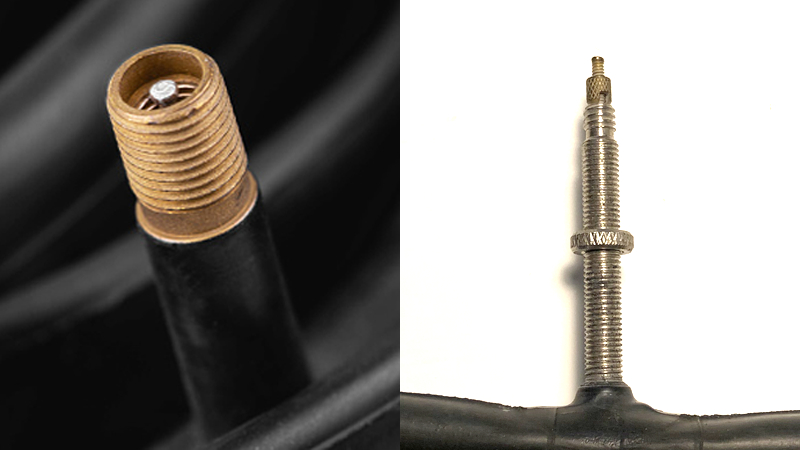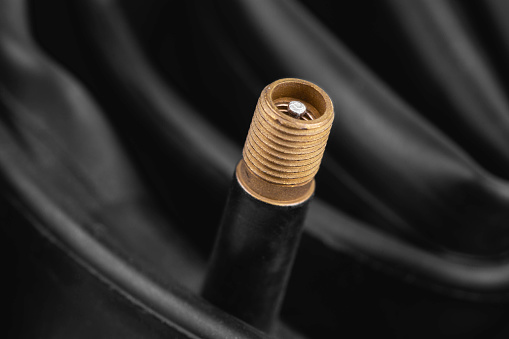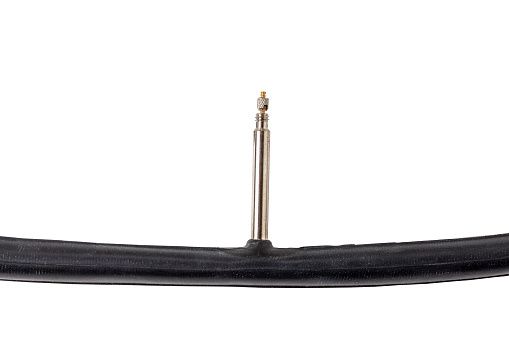Schrader vs Presta: Understanding the differences
Explaining the similarities and differences between two kinds of bike valves

If you've ever walked into a bike shop to buy an inner tube, the first question you'll be asked, aside from 'which size?', will be 'Presta or Schrader valve'? If this question has left you feeling baffled and clueless, don't worry, you're not alone.
Folks who are new to cycling (or who just haven't had to think about these things before) are often caught out by which valve type they need, so we're here to demystify the Schrader vs Presta confusion for you.
One of these valves is known by non-cyclists – you can find them on cars, lorries, motorcycles, and more. These valves are relatively wide, and can comfortably hold 20-50psi, and sometimes more. Also known as the ‘standard’ valve, these valves are threaded on and typically made from rubber near their bottom. We are talking about Schrader valves.
The other type of valve – Presta – is bike-specific and skinnier. Presta valves are meant to hold higher pressures and seal more tightly than a Schrader valve.
So far we’ve only just scratched the surface of the differences between the two most common kinds of bike valves. In this article, we’re going to describe Schrader valves and Presta valves, explain the similarities and differences between each, and teach you how to spot the difference.

Schrader valve
The Schrader valve is a pneumatic (containing pressurised air or gas) tyre valve found on almost all motorised vehicles including cars, motorcycles, and tractors. On bikes, Schrader valves are most often found on low-end hybrid bikes, mountain bikes, and kids' bikes.
Schrader valves are significantly wider than Presta valves, the valve core is situated inside the threaded outer - in the image above, the core is the silver section inside the more golden-coloured threaded outer. As a result of all this, the valve head is a different shape, which means that a Schrader valve and Presta valve need different pump attachments - a wider attachment for Schrader, and a narrower one for Presta.
Get The Leadout Newsletter
The latest race content, interviews, features, reviews and expert buying guides, direct to your inbox!
Schrader valves are more commonly found outside of bike shops than Presta, so if you need to inflate your tyres in a pinch, petrol station tyre inflators will do the job. Meanwhile, you’ll have to go to a bike shop to find a floor pump compatible with a Presta valve.

Presta valve
The Presta valve is narrow and can be found on almost all modern-day road bikes, as well as mid- to high-end mountain bikes, cyclocross bikes, gravel bikes, and more.
You’ll notice the difference in a Presta valve right away – you can’t miss it. It is much skinnier and pointed at the top, because rather than being hidden under a covering of plastic, a Presta valve core is right at the top of the valve itself. This exposed nature does make the valve core more prone to being bent or damaged, so take extra care when pumping up your tyres.
Presta valves also perform better over time compared to Schrader valves, in that they hold air more effectively and don’t degrade as quickly. They can also hold higher pressures, which makes them a must for track cycling where tyre pressures typically exceed 120psi.
What to know when buying a new inner tube
When you walk into a bike shop and ask for a new inner tube, there are a few questions that you might receive: What type of tyre valve do you need? What kind of tube is it? And, what size tyre do you have?
Which bike valve do I need?
Check which valves you currently have on your bike, and buy the same one.
We've run through the differences and similarities between the Presta and Schrader valve now, so you should be able to handle this, but to recap: the Presta valve is skinny and pointed at the end, while the Schrader valve is wider, and rounded at the end.
What kind of inner tube do I need?
Of course, we're getting beyond the realms of the valve here, but the two are literally connected, so we feel it's relevant advice.
Unless you're racing in the National Hill Climbing championships, you're likely to only need standard tubes, often made from butyl rubber. This is what the majority of inner tubes are made from because it's not only the cheapest, but it's the most robust. If you want a tube you can repair with a puncture kit, then standard butyl rubber will do.
However, if getting the lowest weight possible is crucial, then you can also opt for a latex inner tube. Latex is a lot thinner and lighter than butyl, which means a latex inner tube will help your wheels to roll much faster. This makes them a great option for racing, but be aware that it's more prone to punctures because the material is more delicate. They're also prone to leaking air more quickly than a butyl tube will, so you'll need to pump up your tyres before every ride. Once you do get a puncture, they're not repairable.
You can also get 'self-seal' inner tubes which are invariably made using butyl, but with 'slime' or sealant inside which fills holes before your tyre has the chance to totally deflate. In our opinion, while these do work, you will be better served by switching to the tubeless tyres, assuming your wheels are compatible.
Which size inner tube do I need?
The inner tube size you need is dictated by the size of your tyres. It needs to be wide enough to fill them, but not too wide that it doesn't fit.
Luckily, most tyre manufacturers have made this a relatively easy process, because they often print the exact size on the sidewall of the tyre. Check for writing on both sides, and you should see a series of numbers that look something like 700c x 28, or 650b x 47. Or, if you ride a mountain bike, you could see anything from 26 x 1.25 to 27.5 x 2.2 or 29 x 2.8.
This series of numbers first tells you the diameter of your wheel. 700c is a standard road bike wheel, while 650b is slightly smaller and often found on extra small bikes to keep everything in proportion. Meanwhile, 26, 27.5, and 29 refer to inches, and these are reserved for mountain bike wheels and tyres. 650b is actually equivalent to 27.5 inches and is also commonly used on mountain bikes, as well as gravel bikes.
The 'x' means 'multiplied by', or 'by', and is simply denoting a multiplier, in the same sense as a plank of 2 x 4 timber, or how a chessboard is 8 x 8.
The second figure after the 'x' is the width of your tyre. For 700c and 650b wheels, tyre width is measured in millimetres, whereas mountain bike tyres, which are far wider, have their widths measured in inches just like the diameter.
Inner tubes will come in an array of size options. However, to make things easy, each option will fit a range of sizes. For example, a road-specific inner tube may have a size range of 700c x 23/28. This means it will fit a standard 700c diameter road wheel, with a tyre width between 23 and 28mm (inclusive). The same format is used for mountain bike inner tubes.
If you're still not sure, ask someone at your local bike shop. They'll be happy to help, and they deal with this question every single day. Most simply, take your tyre/wheel/bike to the shop and they'll be able to tell you.
Which type of pump do I need?
The critical piece missing to our tyre/tube/wheel combination is the bike pump, without which, we'd never get enough air into our tyres, no matter how hard we tried.
When shopping for a bike pump, there are two main things that you want to be looking for: valve compatibility, and pressure ratings.
First, you need to know what type of inner tube valves you have in order to figure out what type of pump you'll need. Presta-compatible pumps fit Presta valves, while Schrader-compatible pumps fit Schrader valves. There are some adapters that you can buy to make one type work with the other, but these accessories can be expensive and clunky, and they don't work as well as having two compatible devices.
Thankfully most modern bike pumps offer the best of both worlds and have either two heads or a head that can be swapped between Presta and Schrader valve compatibility. Just make sure you secure the correct attachment when using these pumps, and they're usually clearly labelled.
Second, you should consider a bike pump's pressure rating, and how it fits with your bike and tyre setup. Cheaper pumps may only be able to pump up to 100psi, and many other pumps sacrifice pressure potential for accuracy. Meaning, the higher the pressure, the less accurate the pump's pressure gauge becomes.
Mini-pumps or frame pumps are great for a quick fix on the side of the road, but it is extremely difficult, if not impossible, to get them up over 80psi. For more detail on this, we've got a whole buyer's guide to the best bike pumps.
Should I swap from one to another?
Presta valves are the universal standard on most bicycles, whereas Schrader valves are the standard on cars, motorcycles, and almost all other vehicles with tyres. Is there any value in swapping from one to the other?
Given presta valves are better designed for the pressures and the rigours of bicycle use, there is little reason that you would want to swap from Presta to Schrader, but even if you wanted to, it's unlikely you'd be able to, since the hole drilled in your rim is undoubtedly going to be too small for the thicker Schrader valve to fit through.
Swapping in the other direction might seem more attractive, though. However, in our opinion, there's no need. Presta valves are designed to be able to handle higher pressures, but for a bike that came with Schrader valves in the first place, this is never going to be a requirement. What's more, you'll likely need an adaptor to fill the space in the larger hole, and you'll be less able to use a gas station to fill your tyres in a pinch.
Unless you're in a real pinch and can only source a Presta tube to replace a punctured Schrader, then save your money, or put it towards another upgrade.
Zach is a freelance writer, the head of ZNehr Coaching, and an elite-level rider in road, track, and e-racing. He writes about everything cycling-related, from buyer's guides to product reviews and feature articles to power analyses. After earning a Bachelor’s Degree in Exercise Science at Marian University-Indianapolis, Zach discovered a passion for writing that soon turned into a full-fledged career. In between articles, Zach spends his time working with endurance athletes of all abilities and ages at ZNehr Coaching. After entering the sport at age 17, Zach went on to have a wonderful road racing career that included winning the 2017 Collegiate National Time Trial Championships and a 9th place finish at the 2019 US Pro National Time Trial Championships. Nowadays, Zach spends most of his ride time indoors with NeXT eSport.